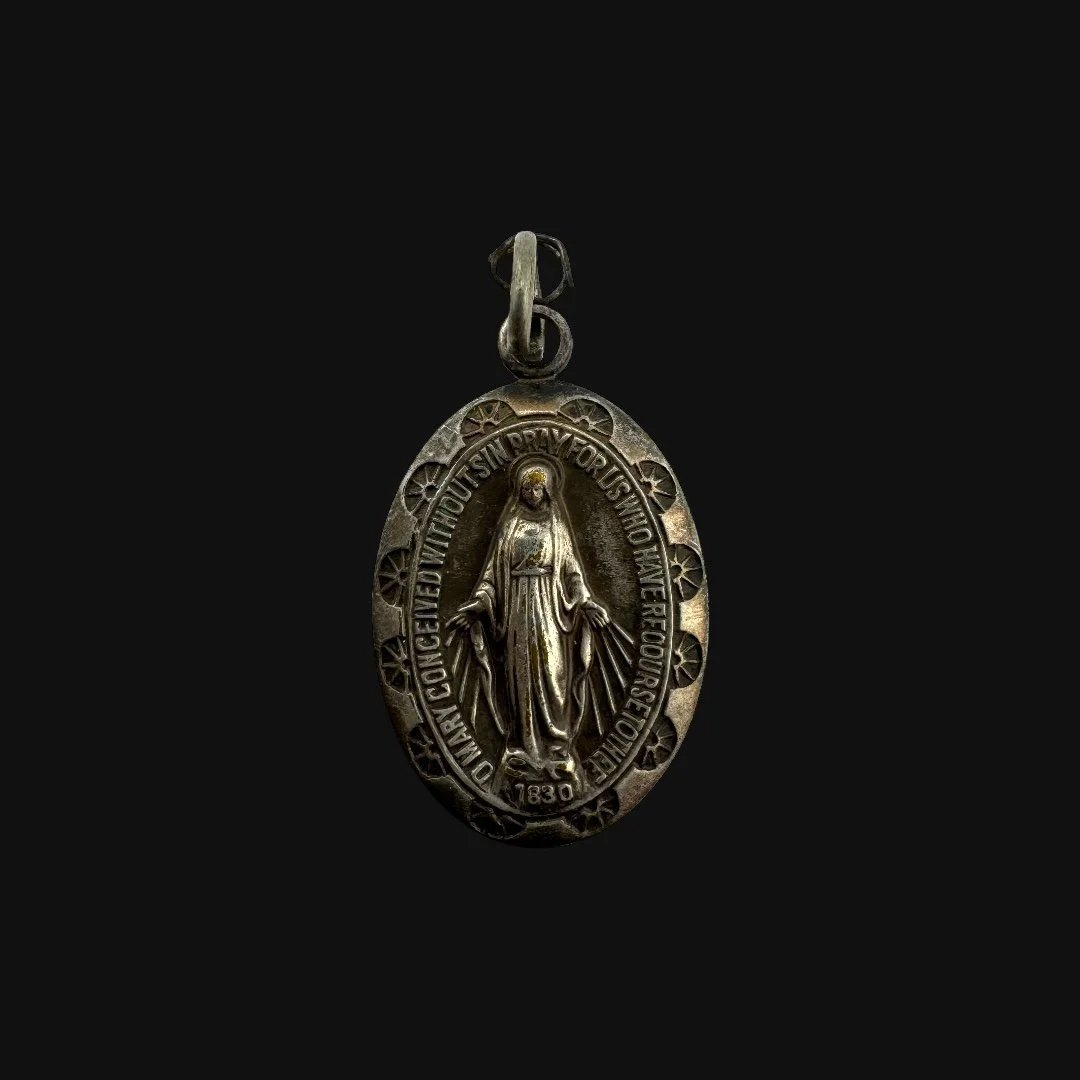 Image 1 of 14
Image 1 of 14

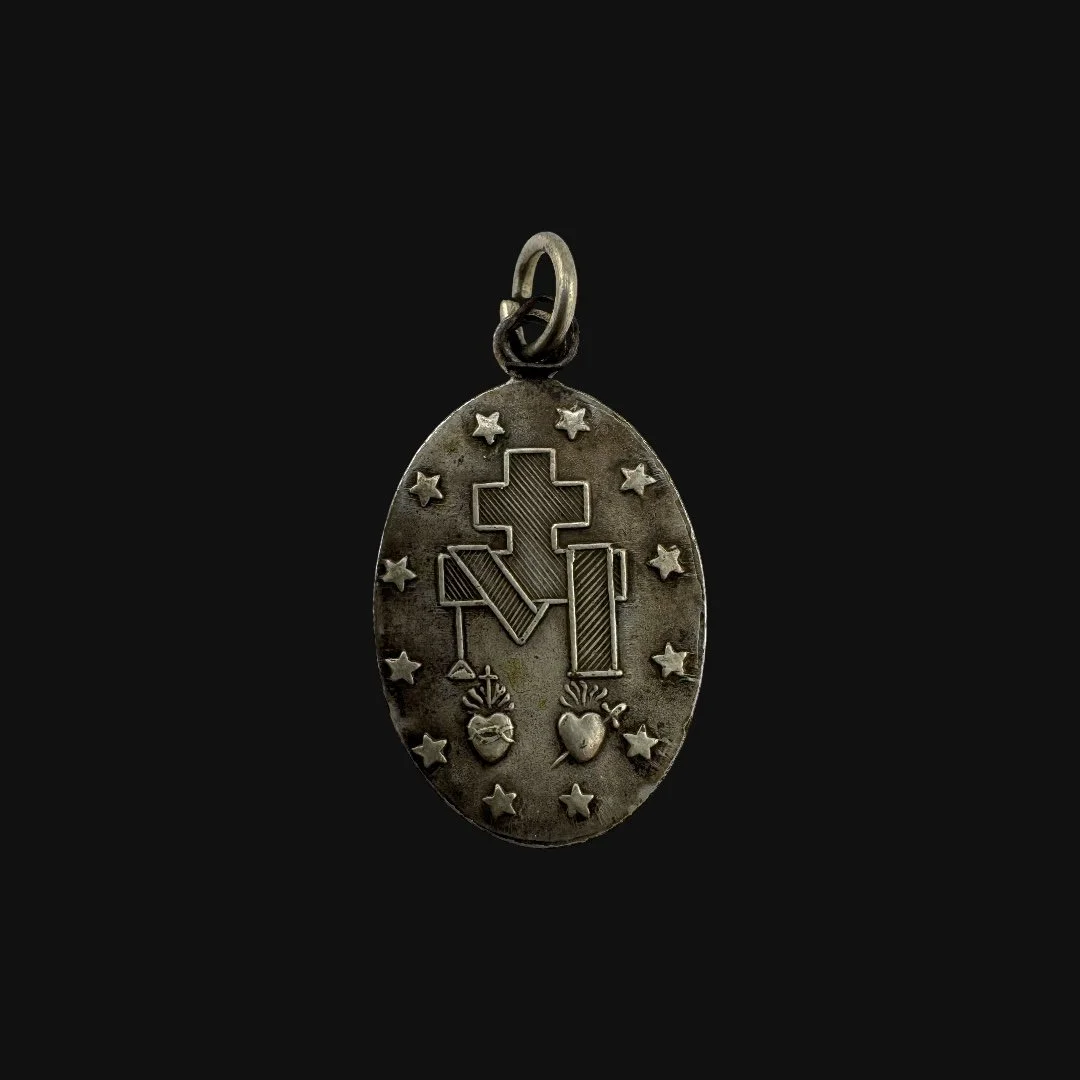 Image 2 of 14
Image 2 of 14

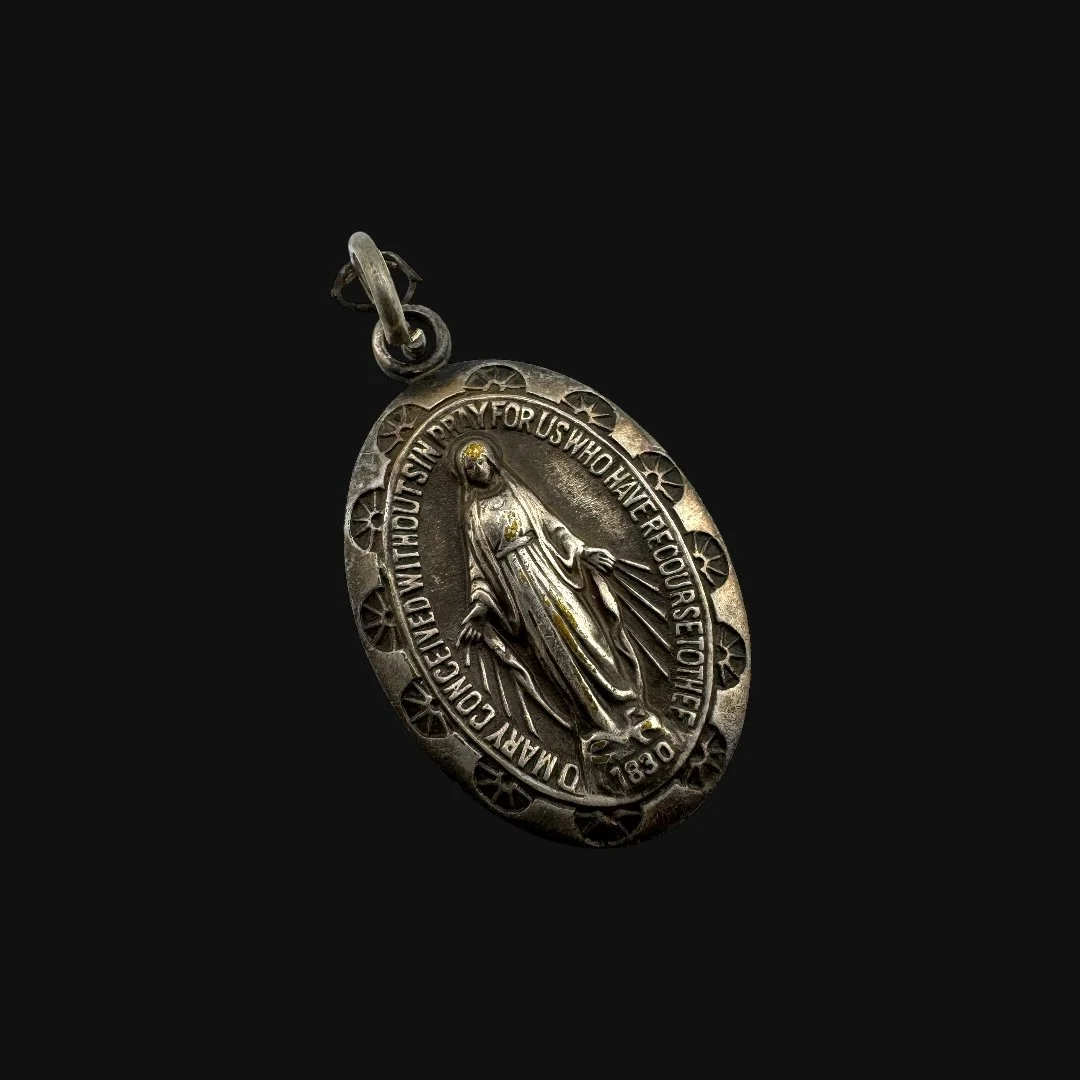 Image 3 of 14
Image 3 of 14

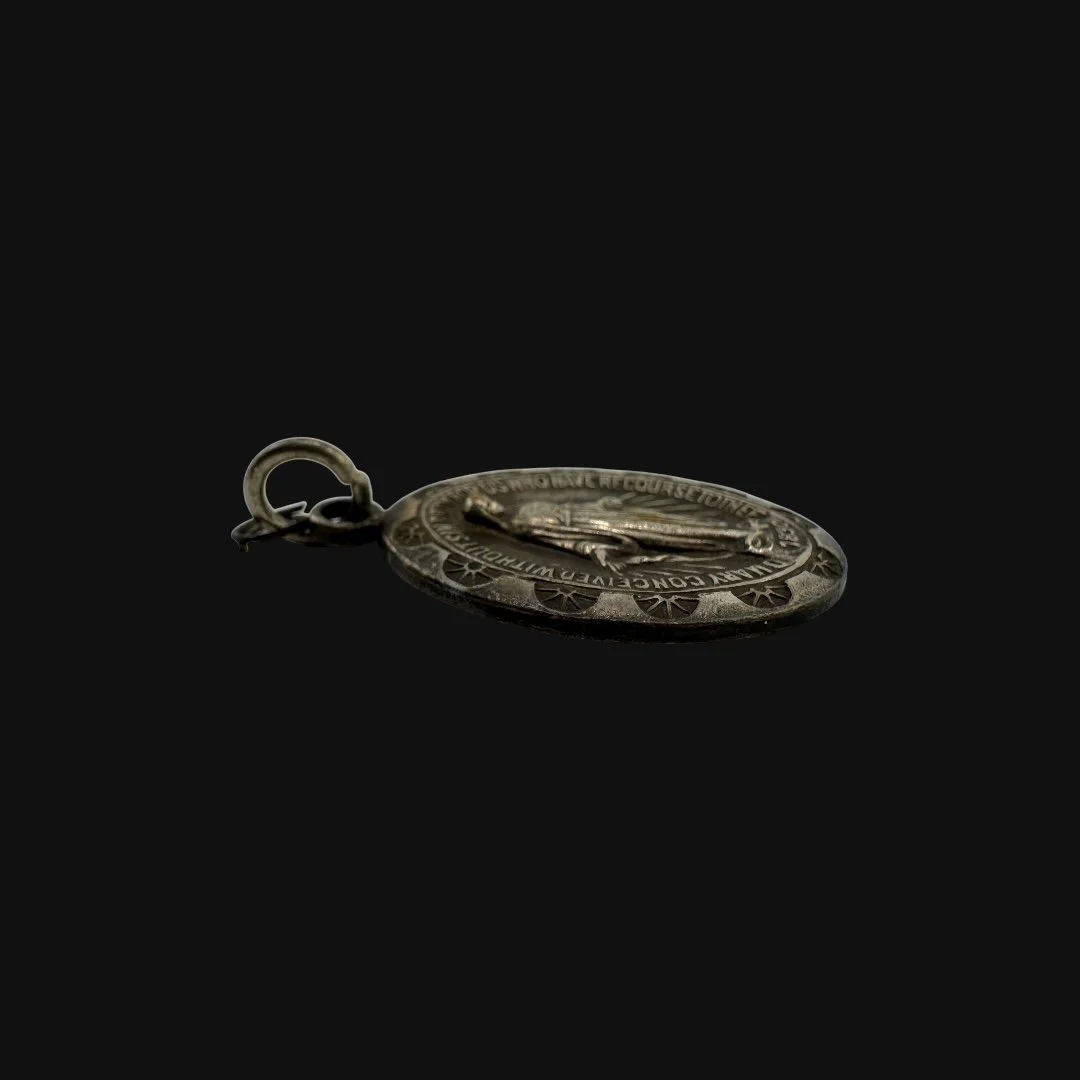 Image 4 of 14
Image 4 of 14

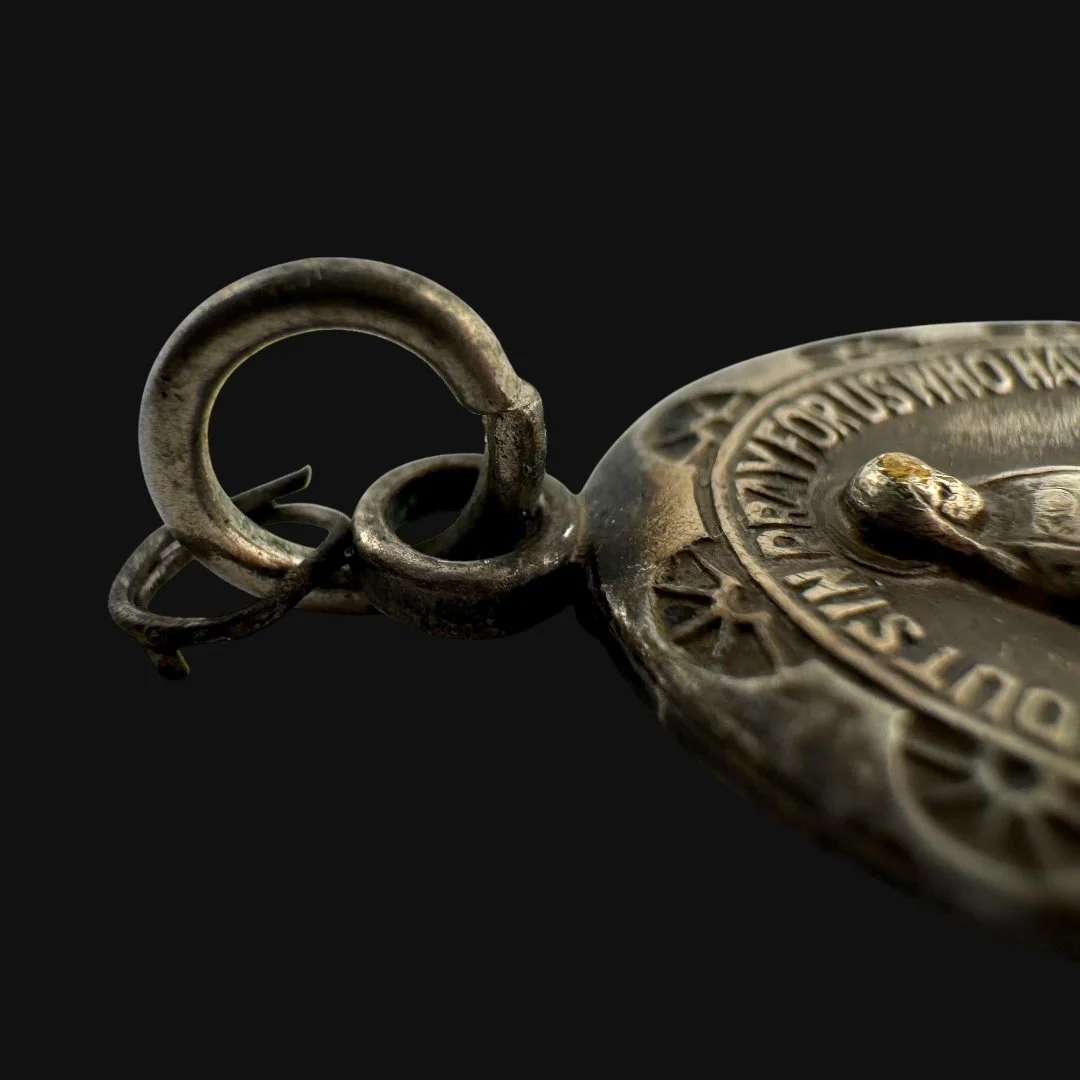 Image 5 of 14
Image 5 of 14

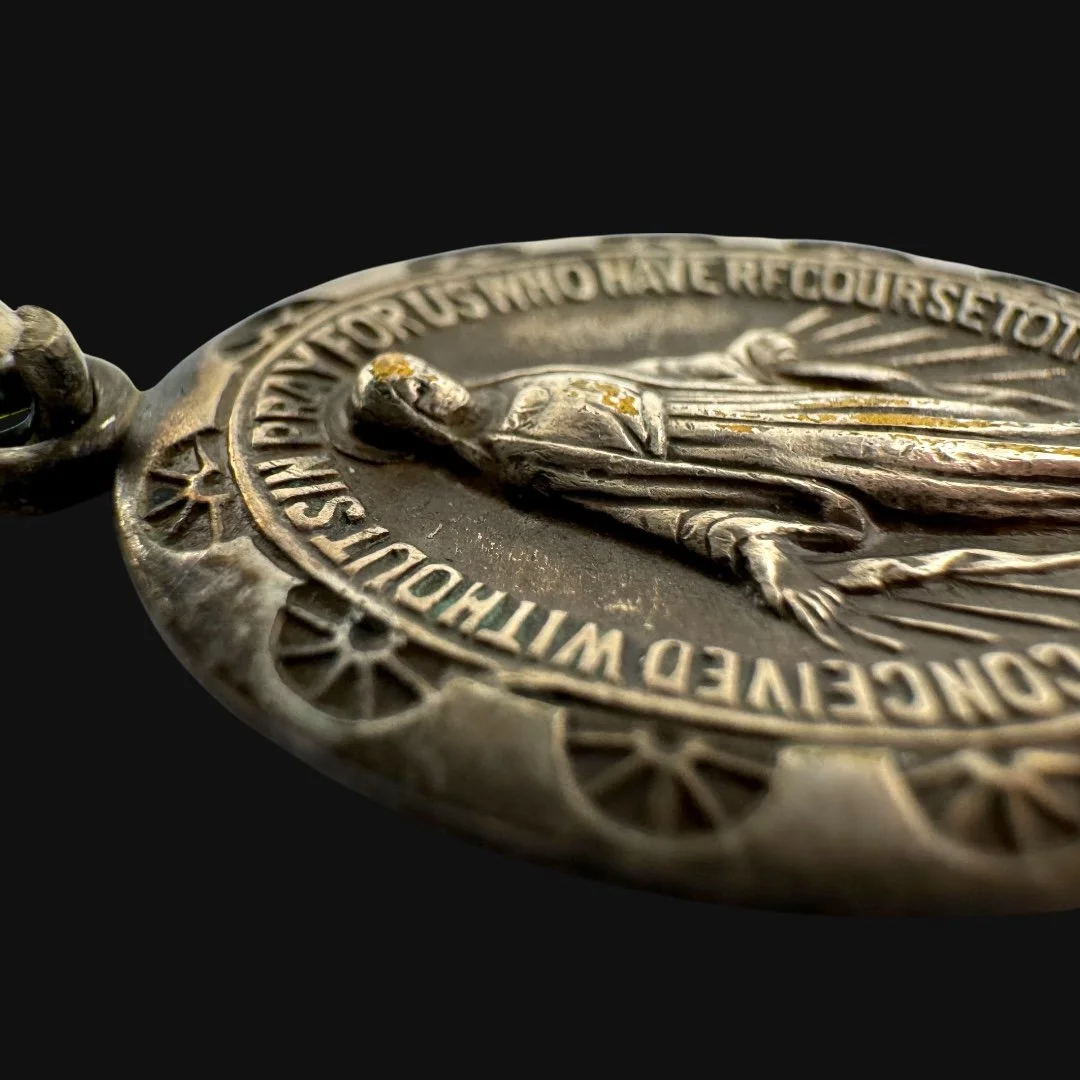 Image 6 of 14
Image 6 of 14

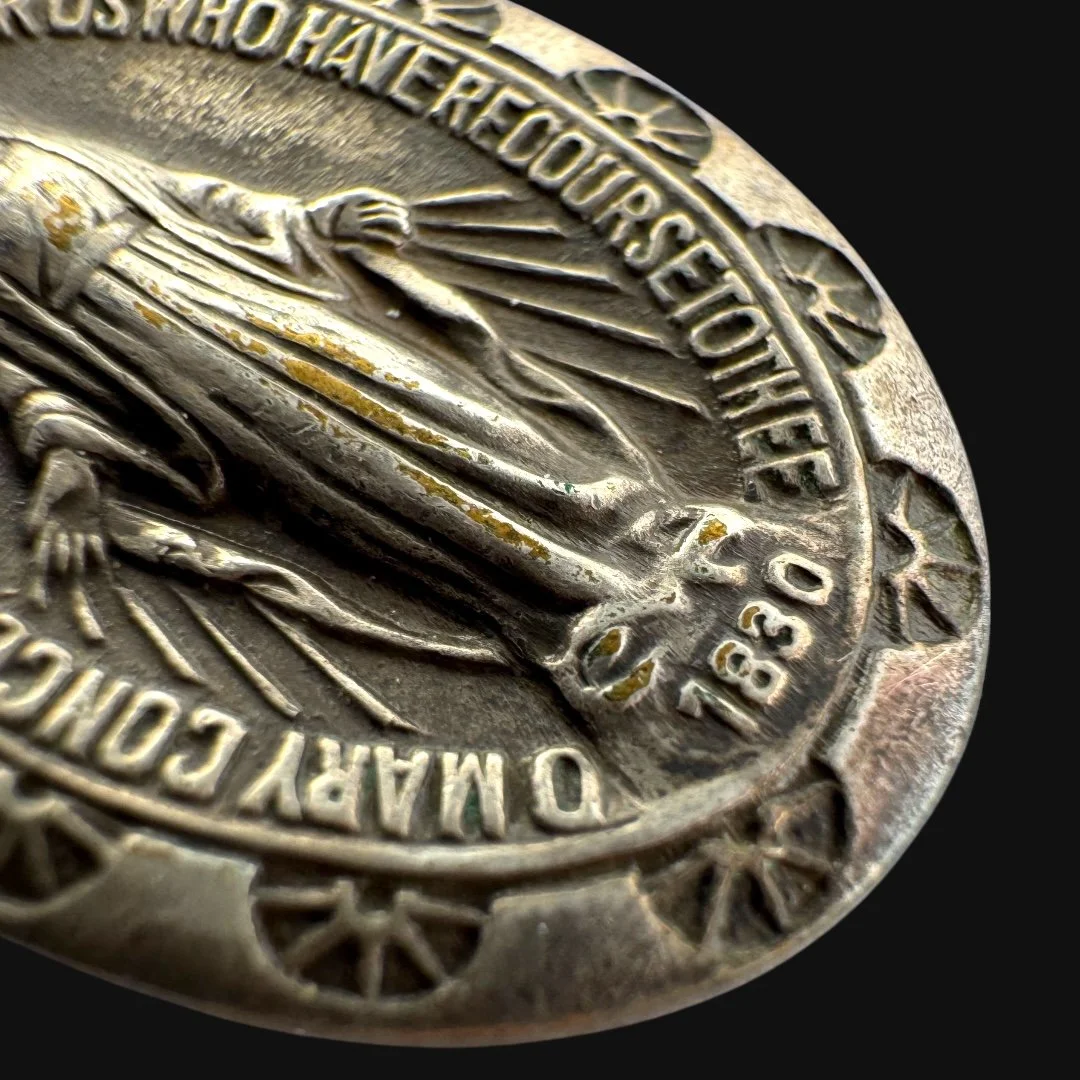 Image 7 of 14
Image 7 of 14

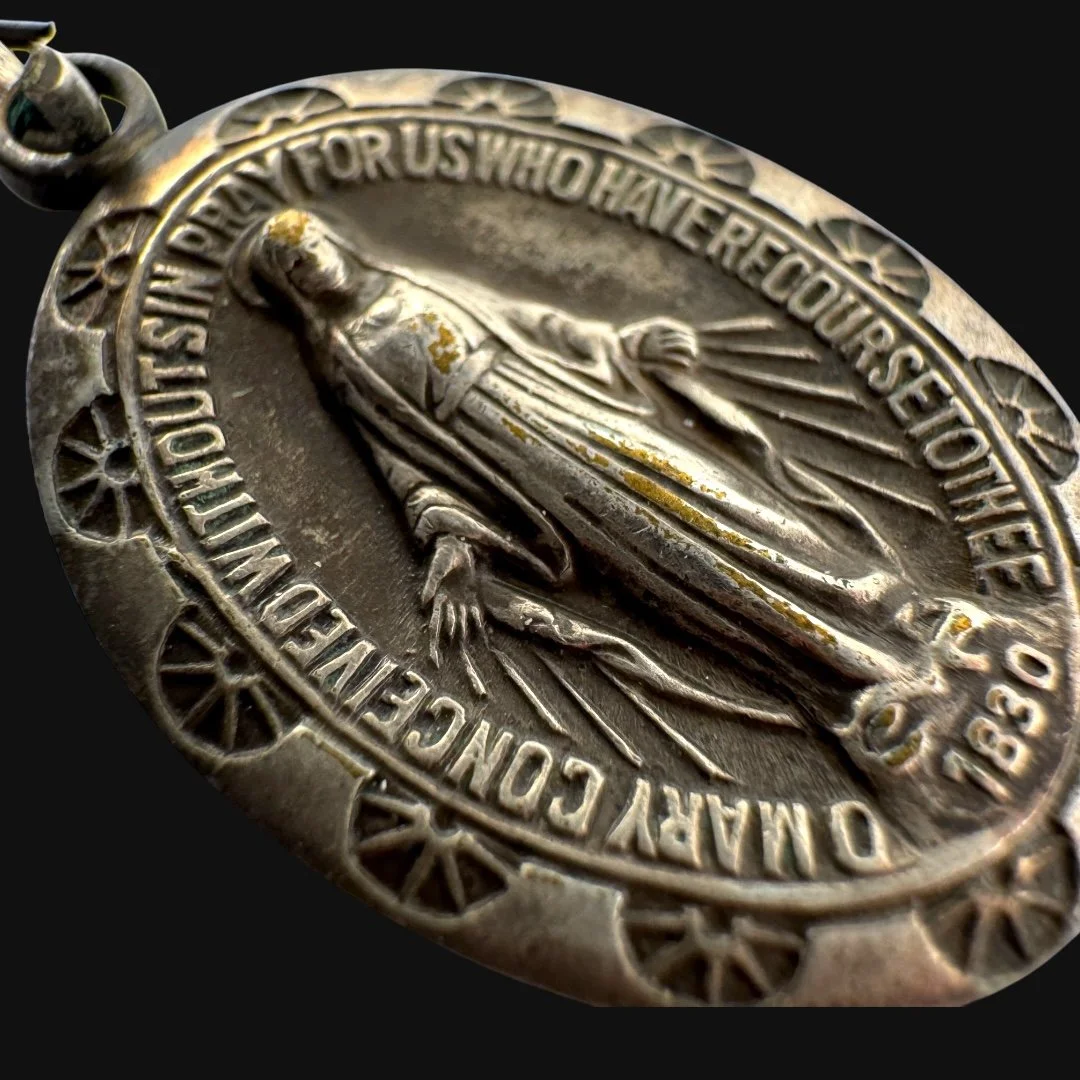 Image 8 of 14
Image 8 of 14

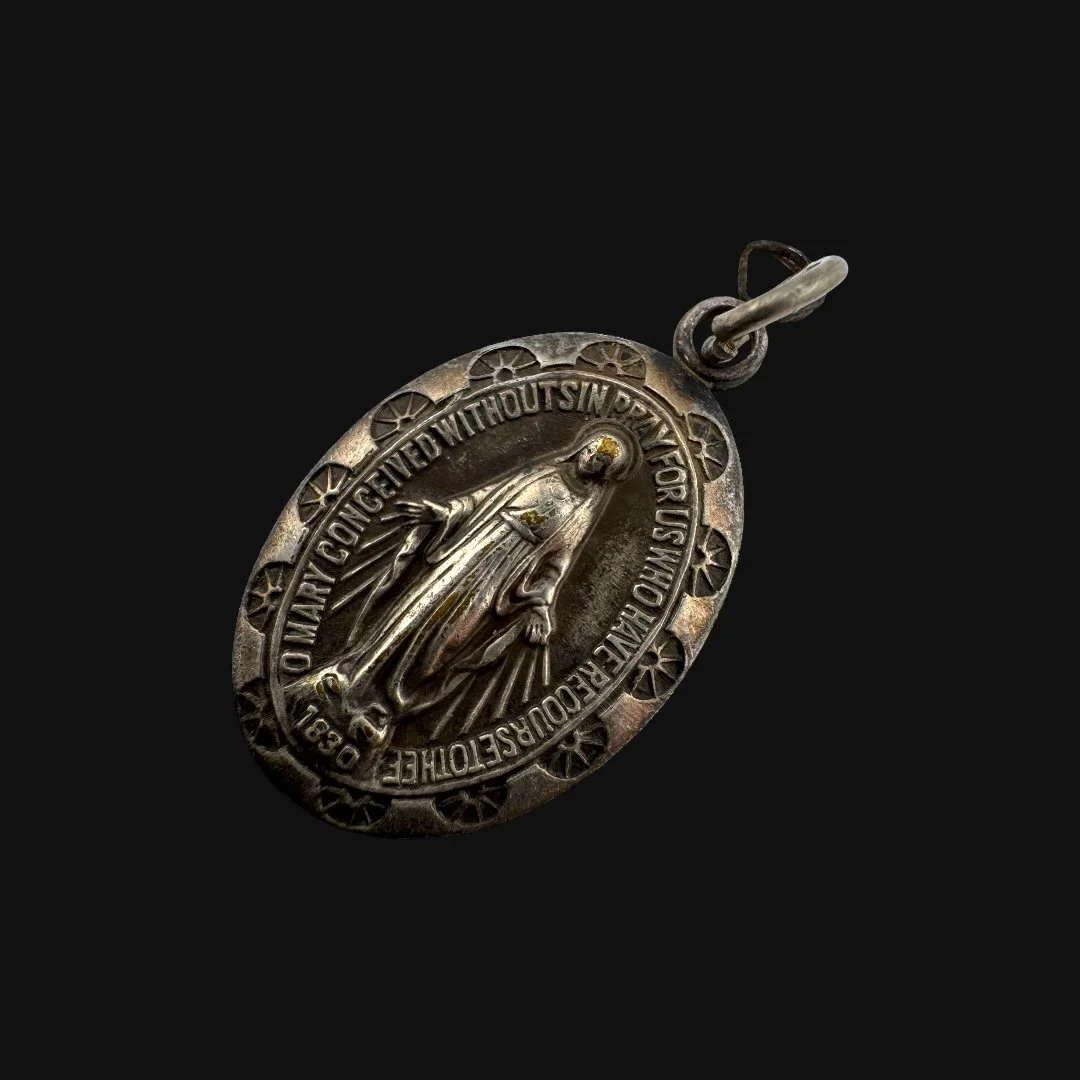 Image 9 of 14
Image 9 of 14

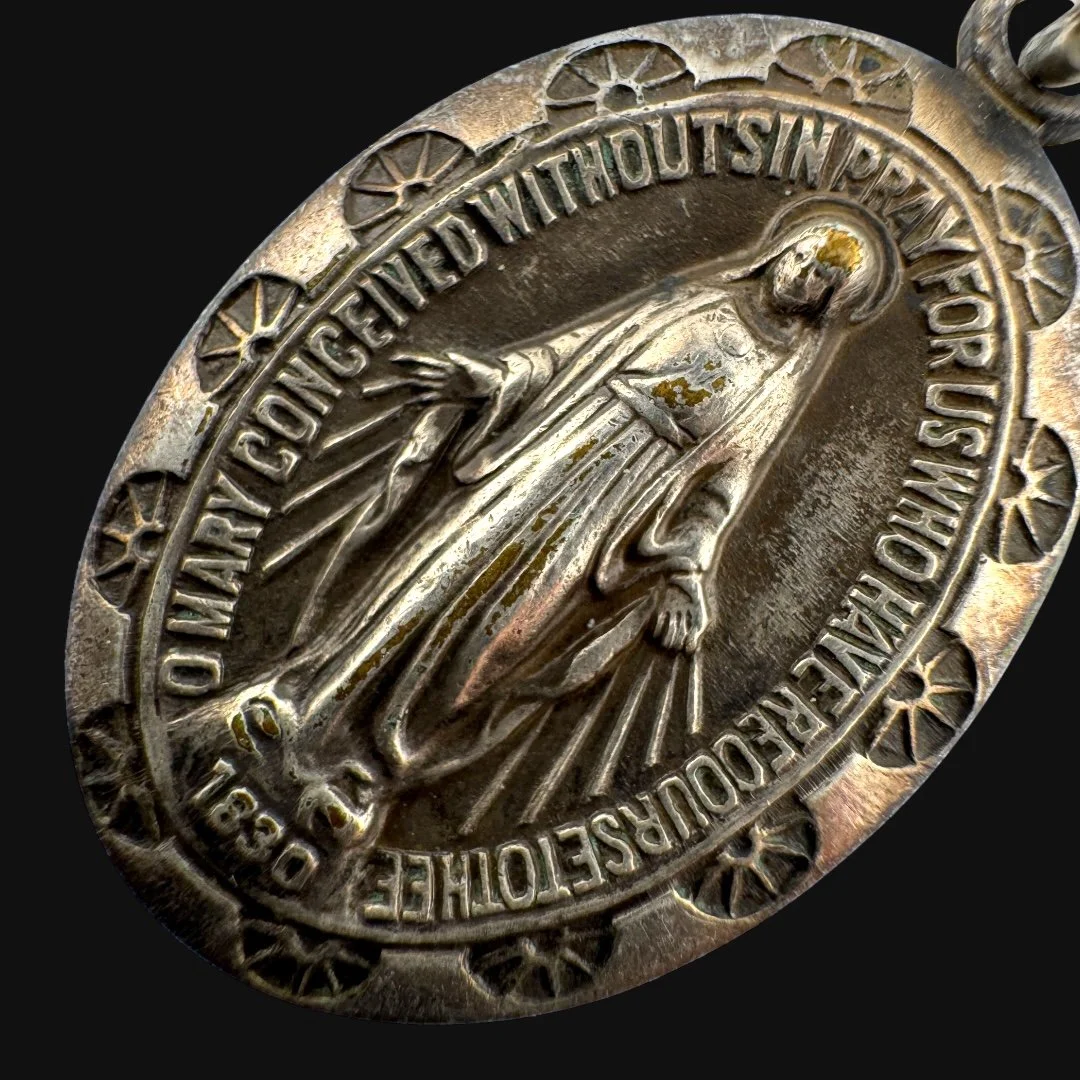 Image 10 of 14
Image 10 of 14

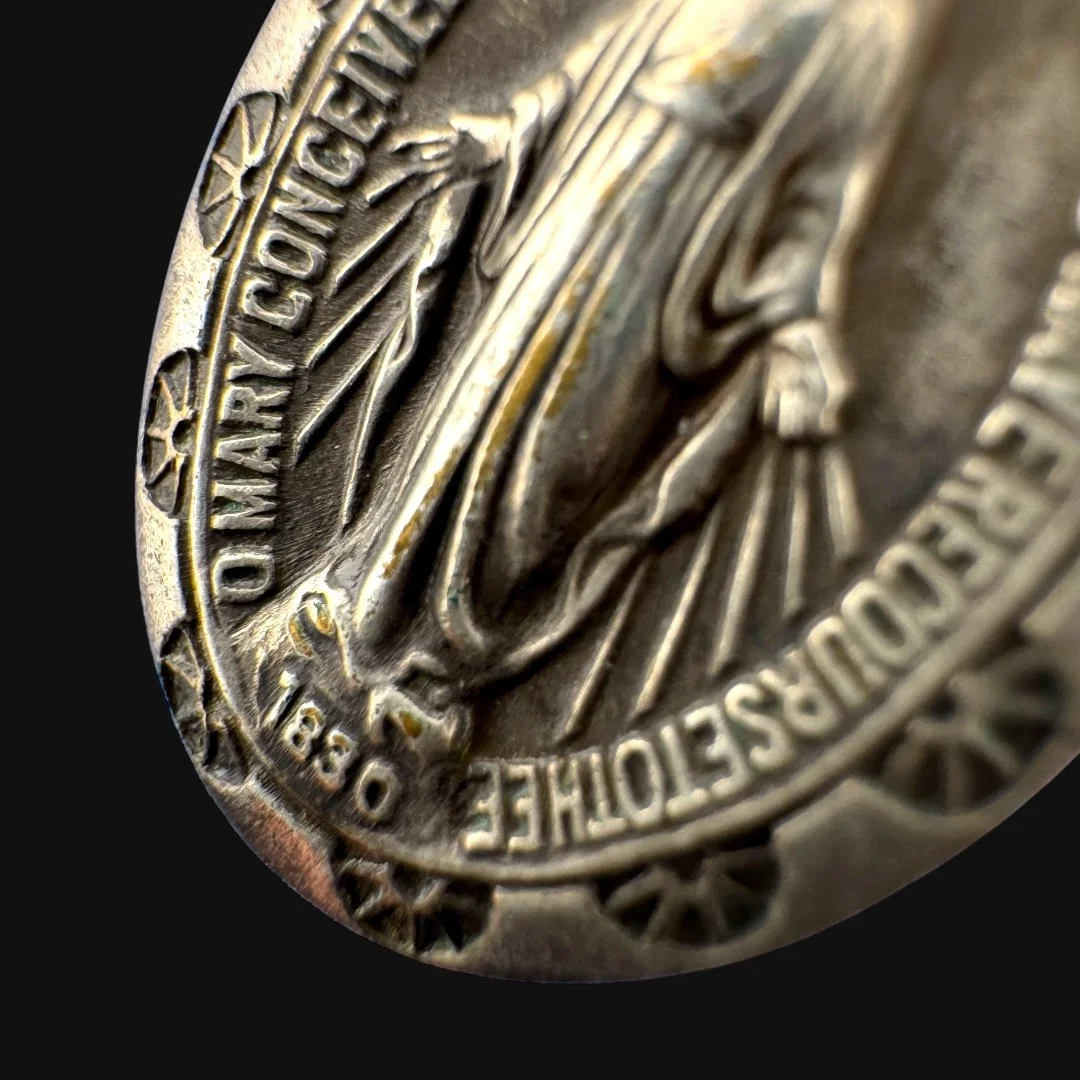 Image 11 of 14
Image 11 of 14

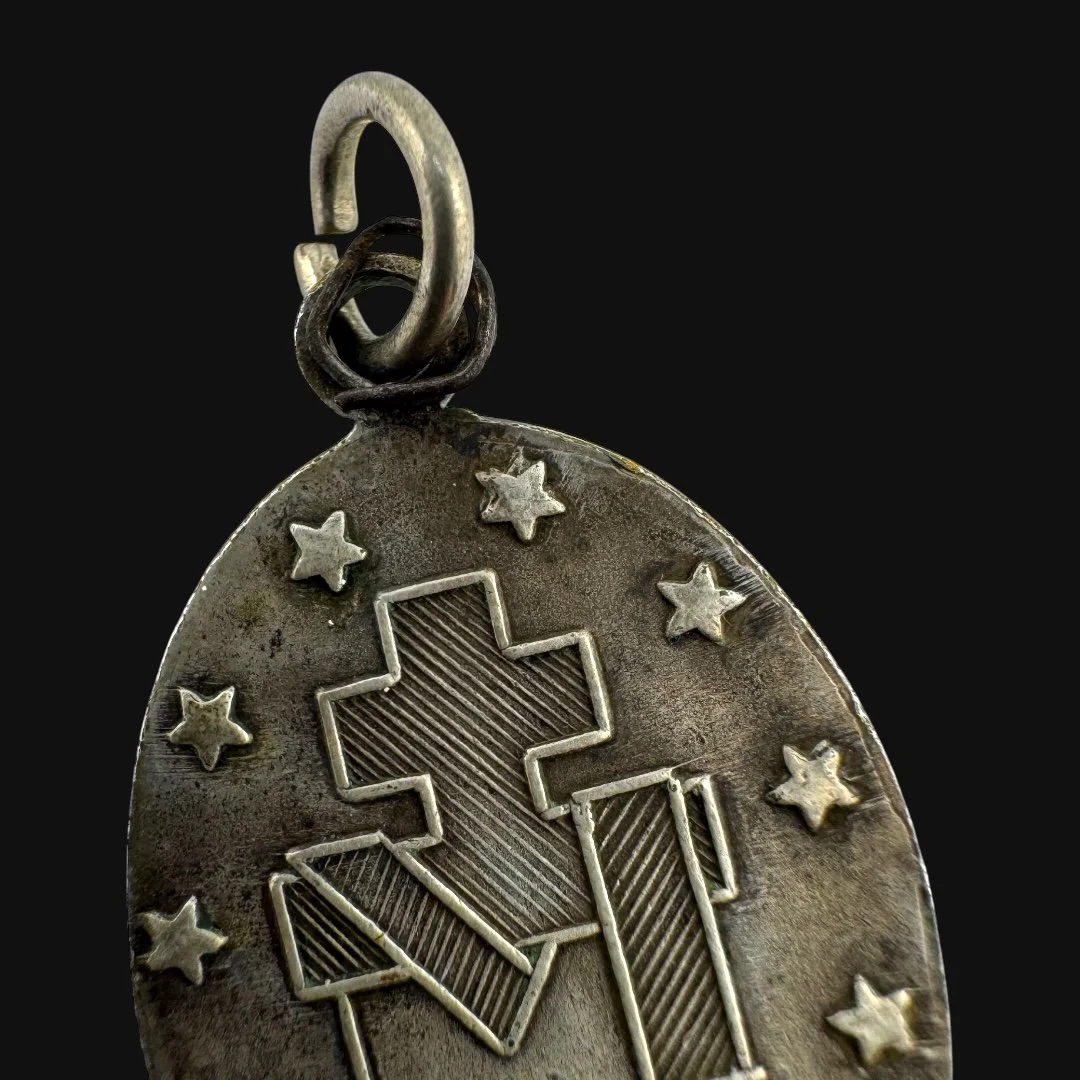 Image 12 of 14
Image 12 of 14

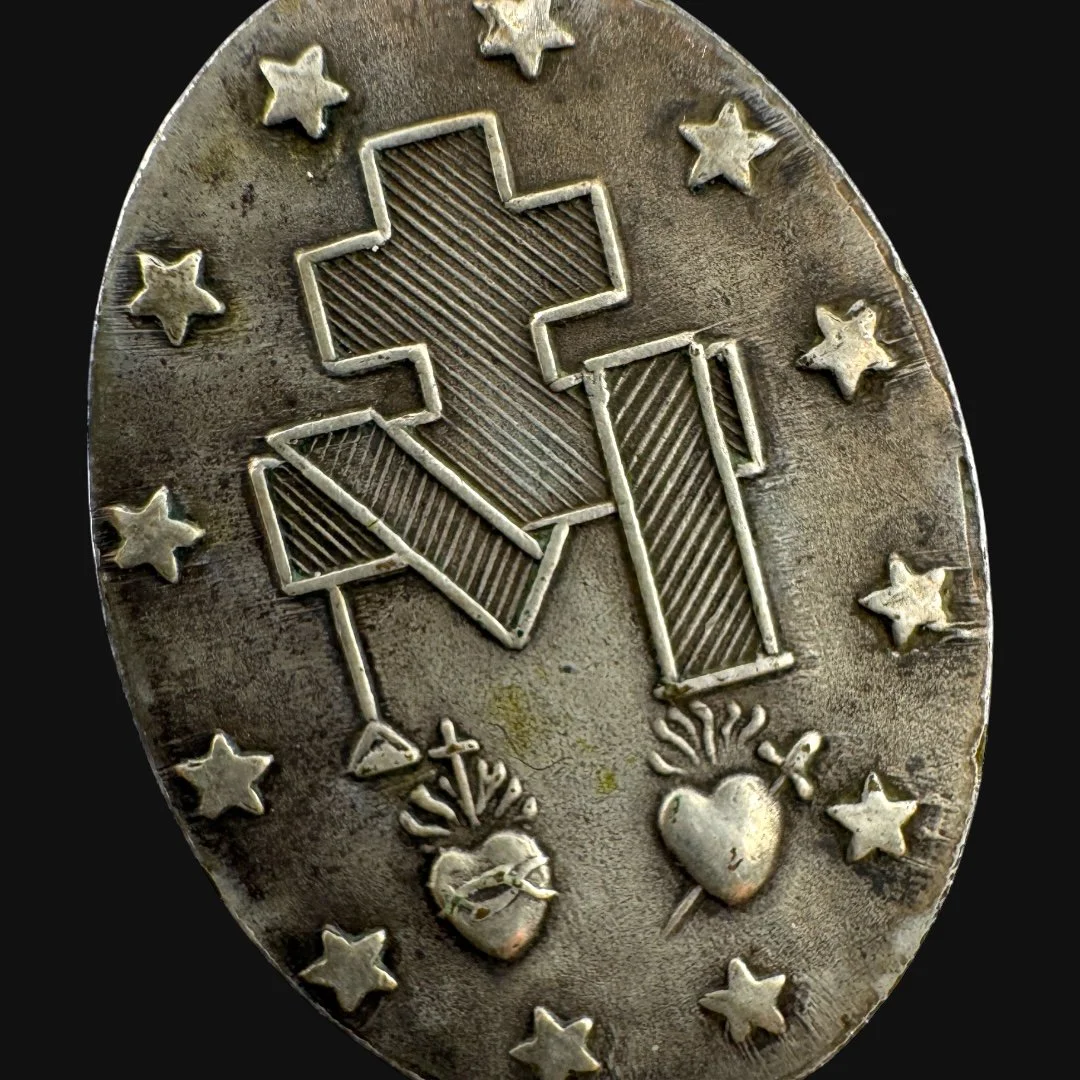 Image 13 of 14
Image 13 of 14

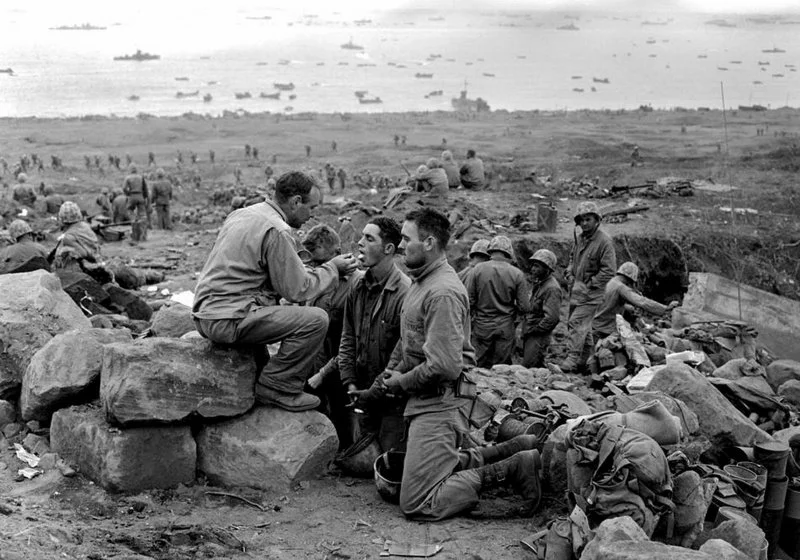 Image 14 of 14
Image 14 of 14















Original WWII 1941-1945 U.S. Soldier's “Virgin Mary” Theater-Worn Military Religious Necklace Pendant
Comes with a hand-signed C.O.A. and a full historical research write-up
From: World War II
Dated: 1941-1945
Pendant Size:Medium/Large (25.5mm x 16mm)
Wearable History Collection:
This authentic 1941-1945 WWII-era soldier’s necklace pendant, preserved in its original and unaltered condition, combines exceptional craftsmanship with lasting durability, making it fully suitable for modern wear today. As part of our exclusive World War II “Wearable History Pendant Collection,” it offers the rare opportunity to own and wear a genuine piece of World War II. Both a timeless accessory and a tangible link to the past, this truly one-of-a-kind necklace pendant stands as a wearable tribute to the courage and sacrifice of a generation.
During World War II, soldiers carried more than rifles, helmets, and rations into battle. Many also carried tokens of faith, love, and hope. Among Catholic servicemen, few keepsakes were as meaningful as a Virgin Mary pendant. Small, modest, and deeply personal, these pendants bore the image of Mary, the mother of Christ, and served as symbols of protection, comfort, and devotion during the uncertainty of war.
These pendants were never official issue by the U.S. Army, Navy, or Marine Corps. Instead, they were privately purchased or gifted by family members. Mothers often placed them into their sons’ hands before departure, praying that Mary would watch over them as she once watched over her son. Sweethearts and wives mailed them overseas tucked inside letters, while soldiers themselves sometimes purchased them at church supply stores, jewelry shops, or Post Exchanges on base. By the 1940s, millions of Catholic medals circulated across the world, many cast in sterling silver, brass, or lightweight base metals. Soldiers wore them alongside dog tags or kept them tucked safely into their pockets.
For Catholic soldiers, a Virgin Mary pendant was a reminder of home and heaven. She embodied compassion, guidance, and protection. For many non-Catholics, the image of Mary still carried meaning, representing hope, love, and the prayer for safe return. In the darkest moments of battle, religious distinctions mattered less than the comfort of having something close to the heart that connected them to their families.
These pendants carried more than religious imagery. They carried the voices of loved ones left behind. A mother’s blessing. A sweetheart’s promise. A wife’s whispered prayer for safe return. In wartime letters, soldiers occasionally mentioned them. One sailor wrote in 1943 that he wore his Virgin Mary medal “next to the tags, so she is close when I am far from home.” Pilots tucked them into flight jackets before long missions. Sailors wore them crossing the vast Pacific. Infantrymen carried them in pockets during endless marches.
Examples in Wartime Use
European Theater: Paratroopers jumped into Normandy on D-Day with Virgin Mary pendants hanging beside their identification tags. Surviving effects of veterans often include Mary medals carried through France, Belgium, and Germany.
Pacific Campaigns: Marines on Guadalcanal and Iwo Jima turned to their pendants during the quiet between battles, fingering them in moments of fear. Sailors voyaging across the Pacific Ocean wore them as reminders of prayers for protection at sea.
Air Force Missions: Bomber crews flying over Europe faced staggering losses. Many carried Virgin Mary pendants in the skies, trusting in her protection during missions from which they might never return.
The Legacy Within This WWII Necklace Pendant:
This original World War II soldier’s necklace pendant was worn as a symbol of faith as they faced the most dangerous campaigns of the war. From the beaches of Normandy and the frozen Ardennes to the islands of Guadalcanal and Iwo Jima, pendants like these traveled with their wearers through the fire of battle. They carried silent strength in the foxholes, aboard the landing craft, and in the skies above Europe and the Pacific. For many young men, they were reminders of family, faith, and home. Every scratch and worn edge tells a story. It reflects long marches under heavy packs, nights spent under artillery fire, and the constant weight of uncertainty. These pendants were deeply personal talismans, often gifted by loved ones, worn close to the heart through the trials of war. To own and wear an original World War II pendant today is to hold a tangible piece of that history. Each is one of a kind. No two carry the same marks, memories, or path through the war. Wearing this meaningful and historical WWII pendant is a natural conversation starter. A way to honor the service of family members who fought in the conflict and to continue carrying the legacy of the Greatest Generation forward. This pendant is not only jewelry. It is a living connection to the past. A reminder of courage, sacrifice, and the enduring spirit of those who shaped history in World War II.
Comes with a hand-signed C.O.A. and a full historical research write-up
From: World War II
Dated: 1941-1945
Pendant Size:Medium/Large (25.5mm x 16mm)
Wearable History Collection:
This authentic 1941-1945 WWII-era soldier’s necklace pendant, preserved in its original and unaltered condition, combines exceptional craftsmanship with lasting durability, making it fully suitable for modern wear today. As part of our exclusive World War II “Wearable History Pendant Collection,” it offers the rare opportunity to own and wear a genuine piece of World War II. Both a timeless accessory and a tangible link to the past, this truly one-of-a-kind necklace pendant stands as a wearable tribute to the courage and sacrifice of a generation.
During World War II, soldiers carried more than rifles, helmets, and rations into battle. Many also carried tokens of faith, love, and hope. Among Catholic servicemen, few keepsakes were as meaningful as a Virgin Mary pendant. Small, modest, and deeply personal, these pendants bore the image of Mary, the mother of Christ, and served as symbols of protection, comfort, and devotion during the uncertainty of war.
These pendants were never official issue by the U.S. Army, Navy, or Marine Corps. Instead, they were privately purchased or gifted by family members. Mothers often placed them into their sons’ hands before departure, praying that Mary would watch over them as she once watched over her son. Sweethearts and wives mailed them overseas tucked inside letters, while soldiers themselves sometimes purchased them at church supply stores, jewelry shops, or Post Exchanges on base. By the 1940s, millions of Catholic medals circulated across the world, many cast in sterling silver, brass, or lightweight base metals. Soldiers wore them alongside dog tags or kept them tucked safely into their pockets.
For Catholic soldiers, a Virgin Mary pendant was a reminder of home and heaven. She embodied compassion, guidance, and protection. For many non-Catholics, the image of Mary still carried meaning, representing hope, love, and the prayer for safe return. In the darkest moments of battle, religious distinctions mattered less than the comfort of having something close to the heart that connected them to their families.
These pendants carried more than religious imagery. They carried the voices of loved ones left behind. A mother’s blessing. A sweetheart’s promise. A wife’s whispered prayer for safe return. In wartime letters, soldiers occasionally mentioned them. One sailor wrote in 1943 that he wore his Virgin Mary medal “next to the tags, so she is close when I am far from home.” Pilots tucked them into flight jackets before long missions. Sailors wore them crossing the vast Pacific. Infantrymen carried them in pockets during endless marches.
Examples in Wartime Use
European Theater: Paratroopers jumped into Normandy on D-Day with Virgin Mary pendants hanging beside their identification tags. Surviving effects of veterans often include Mary medals carried through France, Belgium, and Germany.
Pacific Campaigns: Marines on Guadalcanal and Iwo Jima turned to their pendants during the quiet between battles, fingering them in moments of fear. Sailors voyaging across the Pacific Ocean wore them as reminders of prayers for protection at sea.
Air Force Missions: Bomber crews flying over Europe faced staggering losses. Many carried Virgin Mary pendants in the skies, trusting in her protection during missions from which they might never return.
The Legacy Within This WWII Necklace Pendant:
This original World War II soldier’s necklace pendant was worn as a symbol of faith as they faced the most dangerous campaigns of the war. From the beaches of Normandy and the frozen Ardennes to the islands of Guadalcanal and Iwo Jima, pendants like these traveled with their wearers through the fire of battle. They carried silent strength in the foxholes, aboard the landing craft, and in the skies above Europe and the Pacific. For many young men, they were reminders of family, faith, and home. Every scratch and worn edge tells a story. It reflects long marches under heavy packs, nights spent under artillery fire, and the constant weight of uncertainty. These pendants were deeply personal talismans, often gifted by loved ones, worn close to the heart through the trials of war. To own and wear an original World War II pendant today is to hold a tangible piece of that history. Each is one of a kind. No two carry the same marks, memories, or path through the war. Wearing this meaningful and historical WWII pendant is a natural conversation starter. A way to honor the service of family members who fought in the conflict and to continue carrying the legacy of the Greatest Generation forward. This pendant is not only jewelry. It is a living connection to the past. A reminder of courage, sacrifice, and the enduring spirit of those who shaped history in World War II.